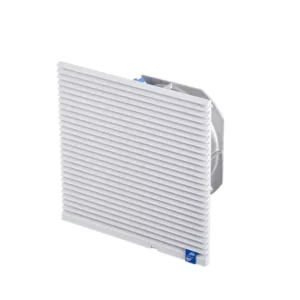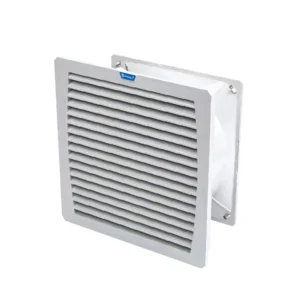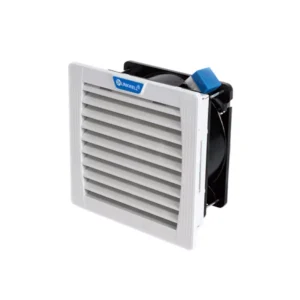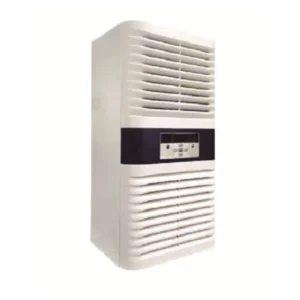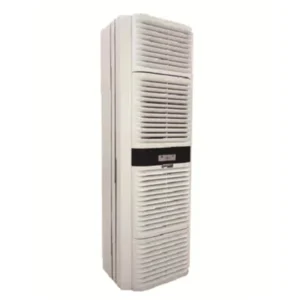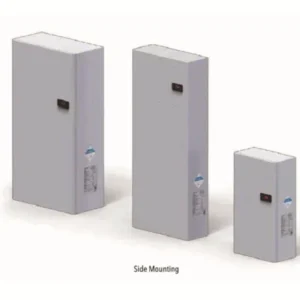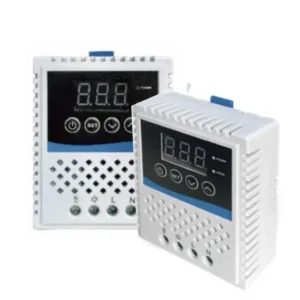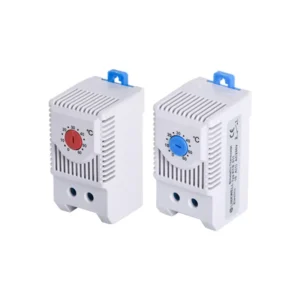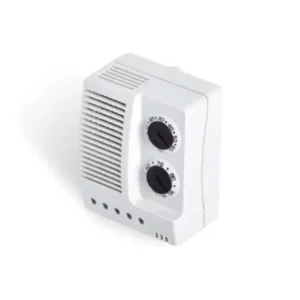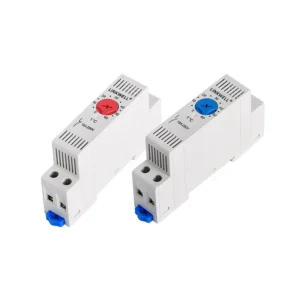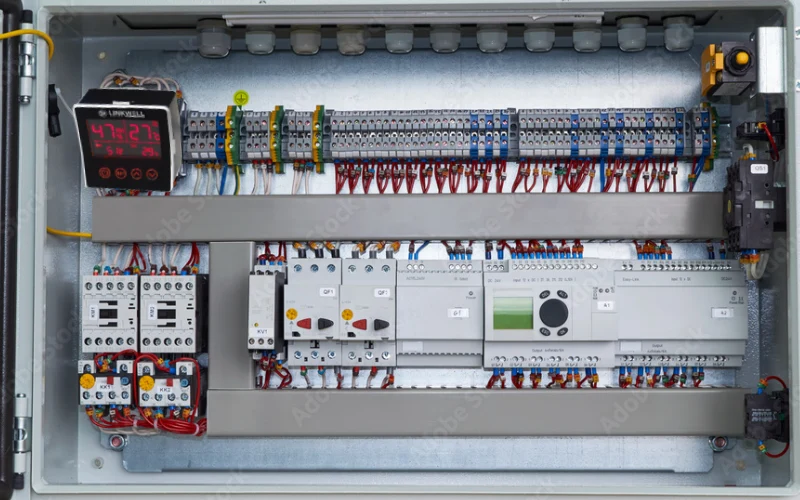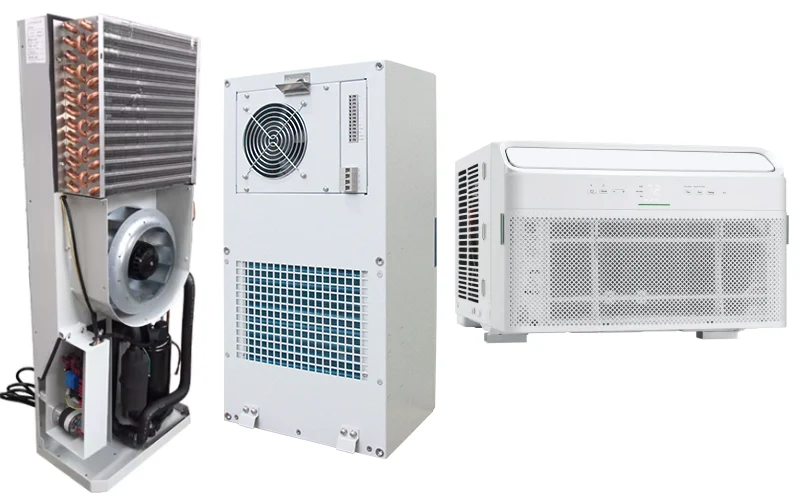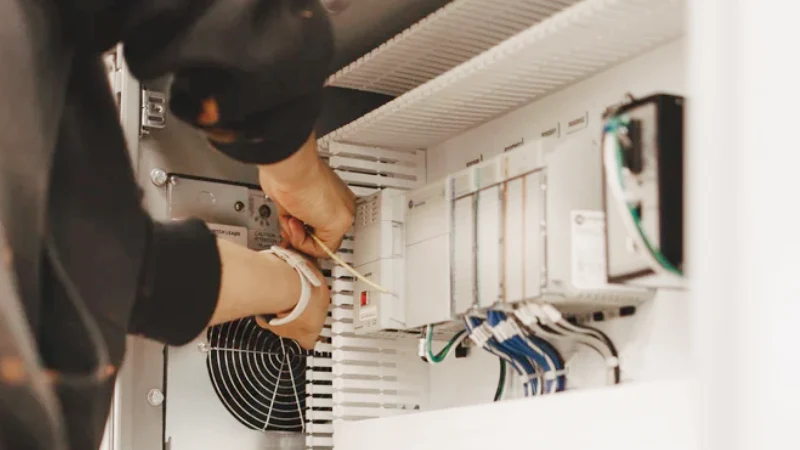When someone asks, “What is an electrical cabinet cooling system?” they’re really asking: how do you control heat inside an electrical enclosure to protect your equipment and keep serious failures at bay? Let me tell you—it’s not just about slapping a fan somewhere—it’s about smart design, solid engineering, and practical usability, all backed by real‑world experience.

I’ve been in this industry for over a decade, building top‑mount filter fans. We learned early on that introducing cool air at the bottom or sides can work—but top‑mounted units outperform in efficiency, clean‑air delivery, and maintenance simplicity. Below, I break down everything you need to know—from standards and airflow science to customer feedback and cost comparisons.
The Essentials of Cooling an Electrical Cabinet
An electrical cabinet cooling system keeps the internal temperature within a safe range, shields against overheating, and prevents dust or moisture from sneaking inside. Think of your proprietary circuit cards, power supplies, and even PLCs: they all generate heat—heat that can impair function, shorten lifespan, or even destroy components if left unchecked.
I’ve seen panels—packed with VFDs and SCRs—hit 85 °C in just a couple of hours when run in dusty, hot conditions. Heat impacts reliability and forces engineers to derate load levels, causing costly downtime. In those cases, effective cooling isn’t optional—it’s essential.
Heat Sources in Electrical Enclosures

Inside an electrical cabinet, there are three main heat contributors:
- Electronic components (power transistors, drives, transformers). Fans of these can produce hundreds of watts in peak use.
- Ambient temperature. If the room is 40 °C, expect 5–10 °C higher inside the cabinet without airflow.
- Dust and condensation reducing cooling efficiency. Filters clog, blocks airflow, and moisture forms—turning internal heat into performance killers.
A thermostat can’t fix it—it’s about designing airflow with the right tools in the right places.
Cooling System Types: Overview
- Filter fans:
- Mounted on sides or top, drawing or expelling air.
- Cost-effective, passive, easy to replace.
- Air-conditioners & heat exchangers:
- Closed-loop cooling, no outside air enters.
- Great for oily or chemical-laden environments; higher cost and power usage.
- Thermoelectric coolers & vortex cooling:
- For niche use—cold starts, harsh conditions, or no open-air solutions.
- Compressed-air-driven or Peltier-based; good for small enclosures or extreme sites.
Each has its place. But for industrial racks or tight cabinet rows, top-mounted filter fans hit the sweet spot: they’re simple, reliable, and cost-effective.
Why We Specialize in Top-Mount Filter Fans
As a manufacturer focused on top‑mount filter fans, we’ve stuck with them for good reasons:
- Convection + suction synergy: Heat rises—our fans on top remove warm air naturally, giving uniform cooling across vertical components. As experts at Pfannenberg note, “moving the enclosure heat from the top … perfect for optimal airflow and temperature distribution” .
- Space‑saving installation: When cabinets are side‑by‑side, top mounting avoids interference. It’s tool‑free and neat.
- Tool‑free filter swaps: Designed with quick‑release clips, users can change filters in under 30 seconds.
- IP54/55 rated: Meets harsh‑environment specs—essential in dusty, oily, wet factory floors.
That’s why distributors say these fans are “bulletproof” and why end-users call them “maintenance heroes” after months of uptime.
Industry Standards & Authority Guidelines
To call your cooling system “industrial‑grade,” you’ve got to check these boxes:
- IEC 60529 (IP Code): An IP54 rating keeps dust/low‑pressure water out. NEMA 12/4/4X gear picks up the same protections
- UL/cUL, CE, EAC certifications: Fire-safety and electrical compliance, e.g., nVent Hoffman HR series lists UL/cUL Type 12—just what OEMs require .
- Thermal management guidelines: Chatsworth’s guide explains sizing fans based on watts-to-CFM conversions
- Condensate control: Pfannenberg’s top-mounted units manage condensate with patented drainage—critical to avoid moisture damage
We embed all these standards, so when you install our fans, you’re not winging it—you’re following tested, certified practices.
Filter Fan vs. Side Fans: Pros & Cons
When it comes to airflow direction, the debate between top-mounted vs. side-mounted filter fans comes up a lot—especially when customers are retrofitting older cabinets. From our experience as manufacturers, here’s what we consistently observe:
| Feature | Side-Mounted | Top-Mounted |
|---|---|---|
| Airflow Distribution | Unbalanced; cools only bottom or side areas. | Balanced; utilizes natural rise of heat. |
| Dust Entry Risk | Higher due to horizontal intake. | Lower; filters stay cleaner longer. |
| Space Interference | Often blocks access or cable routing. | Clears cabinet sides for wiring and doors. |
| Installation Time | May need brackets. | Tool-free and flush-mounted. |
| Maintenance Ease | Filter access on busy side panels. | Quick clip-on/off without side interference. |
Top-mount filter fans win for usability and thermal control, especially when cabinets are in tight rows or placed against walls.
Top-Mount Filter Fans: 5 Technical Benefits
Recommended products
Let’s dig into why our top-mount fans are the go-to choice for modern enclosures:
- Natural Convection Efficiency: Hot air rises naturally—why fight it? By placing the exhaust fan at the top, it pulls out warm air without needing high static pressure.
- Reduced Static Pressure Drop: With straight-line airflow, resistance is lower, reducing fan stress and motor energy consumption.
- Tool-Free Maintenance: Our fans feature click-in mounts and filters that pop out without a screwdriver. Operators love the 1-minute filter swap—no downtime!
- Smart Filter Monitoring: Optional pressure-sensing alarms signal when a filter is clogged, so users change it before it’s too late.
- IP54 & IP55 Ratings: Designed for harsh factories with dust, oil mist, and occasional water spray—our units resist it all.
These aren’t just specs—they’re field-tested advantages. Our customers often report lower failure rates and consistent uptime after upgrading.
Overview of Cabinet Air Conditioners
How Cabinet Air Conditioners Work
Cabinet air conditioners use a closed-loop cooling system. This means they cool internal air without mixing it with the external environment. The system draws in warm air from inside the cabinet, cools it using refrigerants or thermoelectric methods, and then recirculates the cooled air back inside.
Recommended products
Types of Cabinet Air Conditioners
- Compressor-Based Air Conditioners – Use refrigerants and compressors to cool the air. Ideal for high-heat environments.
- Thermoelectric Coolers (Peltier Devices) – Use electric currents to transfer heat without moving parts.
- Vortex Coolers – Use compressed air for cooling; best for small-scale or temporary applications.
Each type has its advantages depending on the application, ambient temperature, and power availability.
Components of a Cabinet Cooling System
Heat Exchangers
These are crucial for removing excess heat from the enclosure. They work best when the external ambient temperature is lower than the desired internal temperature.
Thermostats and Sensors
Recommended products
Digital or analog thermostats monitor cabinet temperatures and trigger cooling mechanisms when preset thresholds are exceeded.
Fans and Filters
While fans facilitate air movement, filters prevent dust and particles from entering, especially in industrial environments. Regular maintenance of filters is key to system longevity.
Comparison: Cabinet Air Conditioners vs. Other Cooling Methods
| Cooling Method | Pros | Cons |
|---|---|---|
| Cabinet Air Conditioner | Precise cooling, closed loop, great for dirty environments | Higher cost, needs regular maintenance |
| Fans | Cost-effective, simple | Ineffective in hot/dusty environments |
| Heat Pipes | No moving parts, energy efficient | Limited cooling capacity |
| Thermoelectric Coolers | Compact, solid-state | Best for low-heat applications |
Key Features to Look for in Cabinet Air Conditioners
Cooling Capacity (BTU/hr)
Choose a unit based on the total heat load inside the cabinet. Undersized systems will struggle; oversized units waste energy.
IP Rating & Environmental Protection
In dusty, wet, or outdoor settings, select units with high IP ratings (like IP54, IP66) or NEMA enclosures to ensure protection against contaminants.
Energy Efficiency & Power Consumption
Look for models with energy-saving modes, variable-speed fans, and inverter-driven compressors to optimize power usage.
Benefits of Using Cabinet Air Conditioners
- Extended Equipment Life: Prevents heat-induced damage.
- Downtime Reduction: Keeps systems running reliably.
- Consistent Performance: Maintains stable temperatures regardless of ambient conditions.
- Dust-Free Operation: Closed-loop design prevents air exchange with the outside.
Real-World Reliability & User Feedback
Let’s talk about what actually happens in the field.
One OEM from Thailand wrote to us saying:
“After switching to your top-mount fans, we saw a 40% reduction in internal faults due to heat. The install took just 12 minutes per cabinet—impressive!”
Distributors love them too. A German wholesaler noted:
“Our customers choose your fans because they know they won’t call us for repairs later. That’s a win-win for all of us.”
We’ve also received feedback from electronics manufacturers who switched to our IP55 units in cleanrooms. The results?
- Fan life extended from 3 to 5 years.
- Downtime reduced to near-zero.
- Filters stayed 2× cleaner, reducing labor costs.
When reliability matters, real-world results tell the story.
Maintenance, Lifecycle & Cost Considerations
Cooling systems are like tires—don’t wait until they burst. Here’s how our fans stand out:
- Filter life: 3–6 months depending on dust level; high-dust filters available for dirty factories.
- Fan motor life: 50,000+ hours MTBF. That’s over 5 years of 24/7 use.
- Filter alerts: Smart sensor models notify operators of clogged filters.
- Cost: Up to 40% cheaper than A/C units, and 70% lower energy bills.
And total cost of ownership? Fan + filter kits + 5 years of maintenance = less than 1/3rd the price of an enclosure cooler.
Case Study: Industrial OEM Integration
A factory in Malaysia manufacturing food packaging machines was facing breakdowns every 3 weeks due to overheating. Their cabinets had no cooling at all.
We helped them install our TopMount Pro500 units:
- Installation time: under 30 minutes per cabinet.
- Internal temp before: 68°C
- Internal temp after: 43°C
- Downtime reduced: 85%
- Payback: under 3 months
The maintenance manager said:
“Your fans were a game-changer. Fast install, zero learning curve, and everything just worked.”
Best Practices & Tech Tips
How to size your cooling system:
- Use the formula: CFM = (Watts dissipated × 1.7)
- Over-size by 10% for future-proofing.
Where to place the fan:
- Top = exhaust (always).
- Bottom = intake (if needed).
- Avoid intake near floor (dust build-up risk).
Extra tips:
- Use dust covers in woodworking or metal shops.
- Install alarm outputs to SCADA for filter warnings.
- Always check IP rating matches cabinet location.
These practical design rules improve reliability and save on long-term costs.
FAQs
What is the best way to cool an electrical enclosure?
The best way depends on the heat load and environment. For industrial settings, top-mounted filter fans or closed-loop cabinet air conditioners offer reliable and efficient cooling.
Do I need a filter fan or a cabinet air conditioner?
Use filter fans when ambient air is cooler and clean. If the cabinet is in a hot, dirty, or humid environment, go with a closed-loop cabinet air conditioner.
How do I calculate the cooling needs of my cabinet?
Multiply the total wattage of internal components by 1.7 to estimate required airflow in CFM. Oversize by 10% to account for future additions and ensure stable cooling.
How often should I change the filters in my cooling system?
Filters should be checked every 3–6 months, depending on environmental dust levels. Smart models with sensor alerts make maintenance easier and prevent performance loss.
Can I install top-mounted filter fans myself?
Yes! Most top-mount fans come with tool-free mounting, pre-cut templates, and quick-connects. Even non-experts can install one in under 30 minutes per cabinet.
Are there standards I need to meet for enclosure cooling?
Yes. Look for products with IP54/IP55 ratings, UL, CE, and NEMA compliance. These ensure your system is safe, certified, and fit for industrial use.
Conclusion
A well-designed electrical cabinet cooling system: cabinet air conditioner setup is more than just an accessory—it’s essential protection for your valuable equipment. Whether you choose filter fans or air conditioners, the goal remains the same: keep your enclosure cool, clean, and compliant.
By choosing top-mounted filter fans, many users benefit from natural heat convection, space-saving designs, easier maintenance, and reduced energy bills. With real-world success stories, proven performance metrics, and compliance with global standards, these solutions offer the smartest balance between cost, simplicity, and reliability.
Always size correctly, follow linkwell principles, and maintain regularly—because in this game, heat is the enemy, and linkwell is your best friend.


